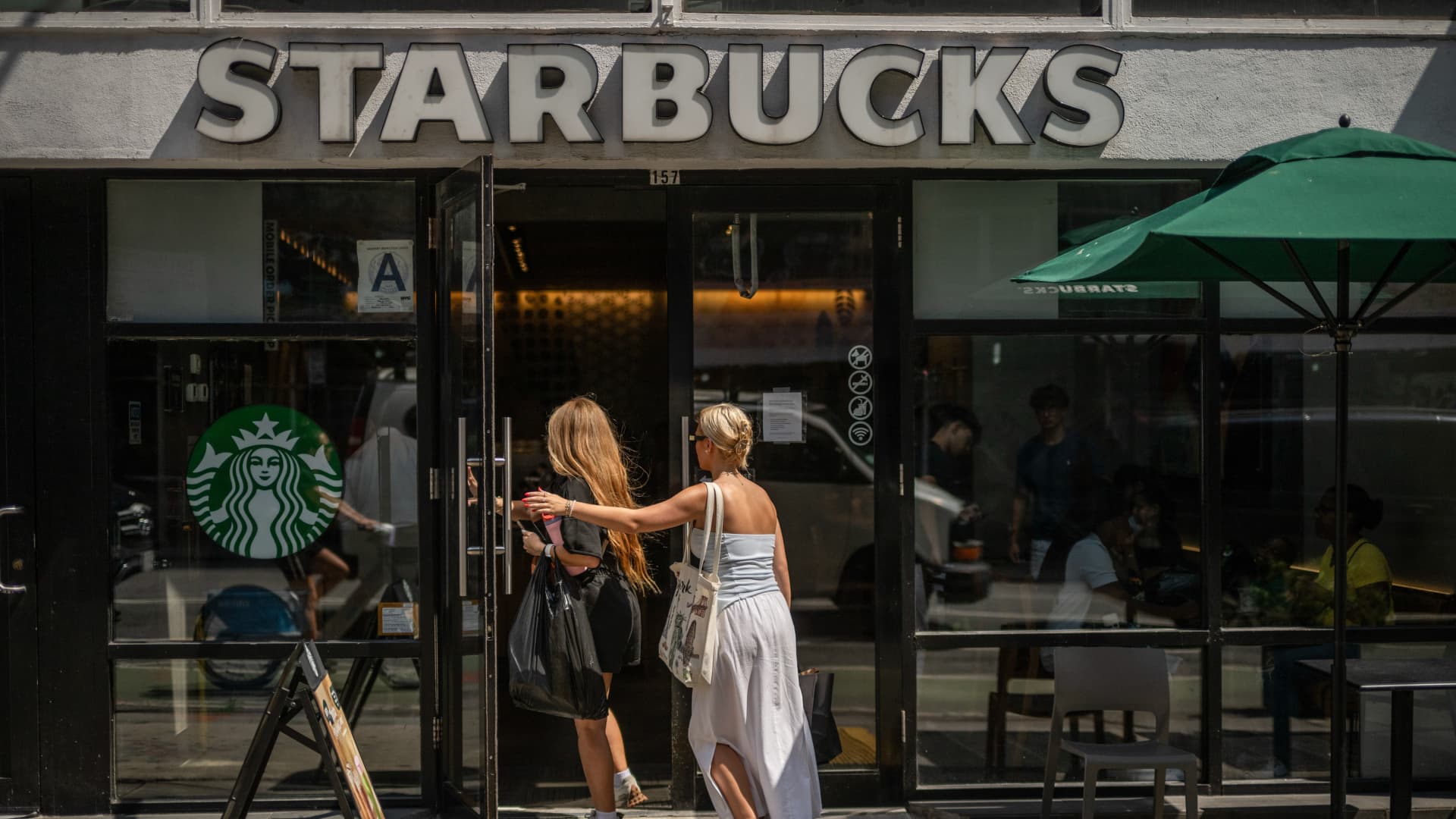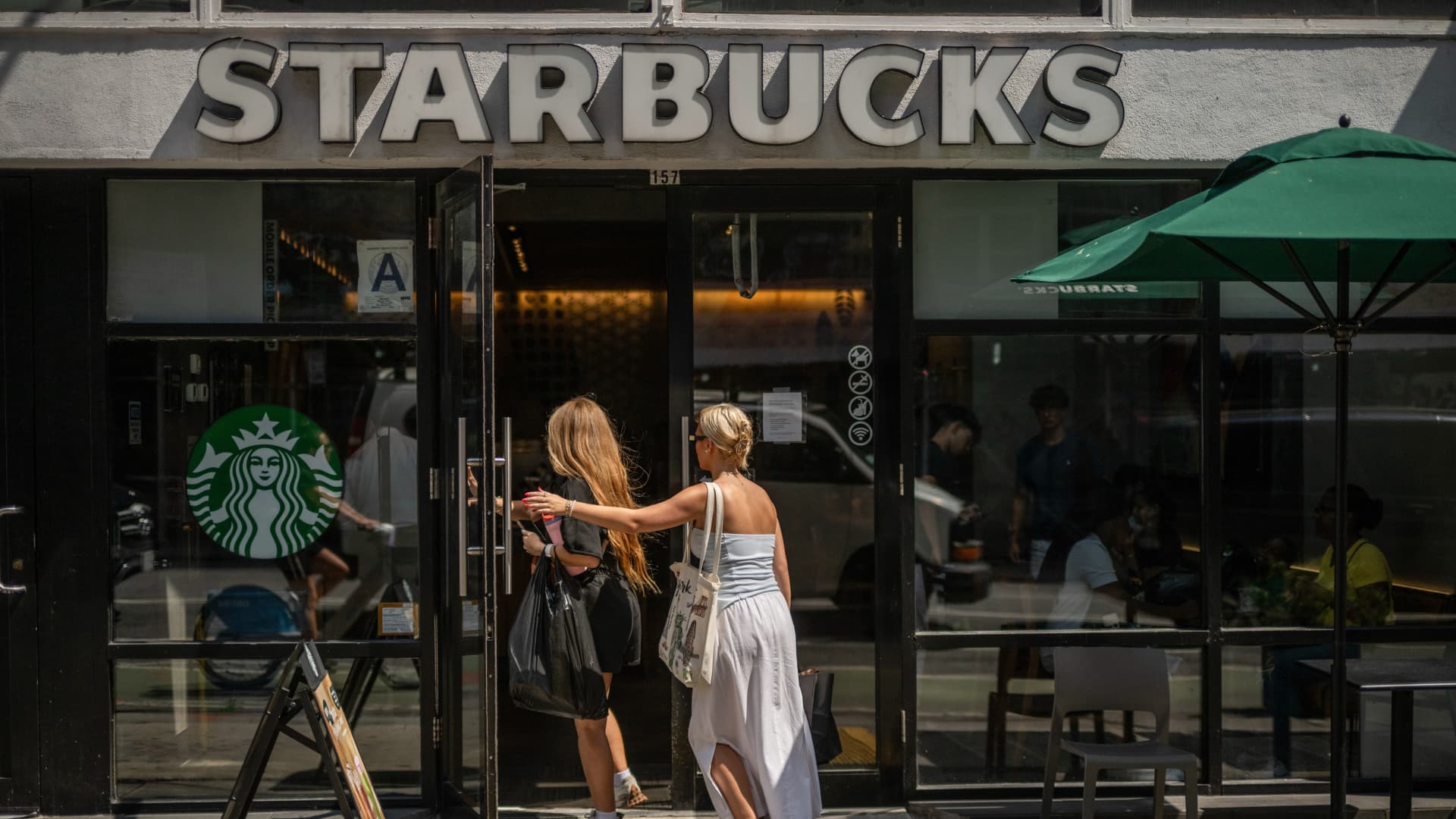Starbucks’ Turnaround Under Brian Niccol: A Delicate Brew
The Brewing Storm: Starbucks’ Current Challenges
Starbucks, once the undisputed king of coffee, now finds itself in a precarious position. The company’s recent struggles are not merely a blip on the radar but a series of interconnected issues that have culminated in a significant decline in same-store sales. This decline, spanning six consecutive quarters, is a red flag that cannot be ignored. The challenges facing Starbucks are multifaceted and require a nuanced understanding to devise effective solutions.
Intensified Competition
The coffee market has become a battleground. Independent coffee shops, with their artisanal brews and cozy ambiance, are attracting a growing number of consumers. Meanwhile, fast-food chains are expanding their coffee offerings, providing convenient and affordable alternatives. Starbucks, once a pioneer, now finds itself in the midst of a crowded market, struggling to maintain its market share.
Evolving Consumer Preferences
Consumers are no longer satisfied with just a cup of coffee. They seek unique experiences, ethically sourced beans, and customizable options. Starbucks, with its vast menu, needs to adapt to these evolving preferences to stay relevant. The company must find a way to balance its mass appeal with the desire for personalization and authenticity.
Operational Inefficiencies
Long lines, inconsistent service, and a complicated menu have negatively impacted the customer experience. These operational inefficiencies are not just inconveniences but significant deterrents that contribute to the decline in same-store sales. Starbucks must streamline its operations to ensure a seamless and enjoyable customer experience.
Inflationary Pressures
Rising costs of ingredients, labor, and rent have squeezed profit margins. Starbucks faces the delicate task of maintaining competitive prices while mitigating the impact of inflation on its bottom line. This balancing act is crucial for the company’s financial health and customer satisfaction.
Niccol’s Strategic Brew: A Path to Revival
Brian Niccol, the newly appointed CEO, brings a wealth of experience and a proven track record of turning around struggling businesses. His strategy for Starbucks is not a radical overhaul but a series of strategic adjustments aimed at refining the existing business model and enhancing the customer experience.
Menu Innovation and Simplification
Niccol recognizes the need to cater to evolving consumer tastes. He is overseeing a revamp of the Starbucks menu, introducing new and innovative beverages and food items while streamlining existing offerings. The goal is to offer a compelling selection that appeals to a broader audience without overwhelming baristas or slowing down service.
Operational Excellence and Efficiency
Addressing the issue of long lines and inconsistent service is paramount. Niccol is focusing on improving operational efficiency through technology investments, staff training, and process optimization. This includes leveraging mobile ordering, optimizing store layouts, and implementing standardized procedures to ensure consistent quality and speed of service.
Re-emphasizing the Starbucks Experience
Niccol aims to recapture the “Starbucks Experience” that once set the company apart. This involves creating a welcoming and inviting atmosphere, fostering a sense of community, and providing personalized service. This can be achieved through store redesigns, enhanced customer engagement programs, and empowering baristas to create meaningful interactions with customers.
Strategic Expansion and Portfolio Optimization
While Starbucks remains committed to global expansion, Niccol is taking a more strategic and disciplined approach. This involves focusing on high-growth markets, optimizing the store portfolio by closing underperforming locations, and exploring new formats and channels, such as drive-thrus and delivery services.
Leveraging Technology and Digital Innovation
Technology plays a crucial role in Niccol’s turnaround strategy. Starbucks is investing in digital initiatives to enhance the customer experience, improve operational efficiency, and drive revenue growth. This includes expanding the Starbucks Rewards program, personalizing offers through data analytics, and leveraging artificial intelligence to optimize inventory management and staffing levels.
Holding Steady on Prices
Acknowledging customer price sensitivity, Starbucks intends to maintain stable pricing, even amidst economic headwinds. This strategic decision aims to retain customer loyalty, although one analyst has noted the potential challenges it poses to the company’s financial performance.
Wall Street’s Cautious Optimism: Signs of Progress
Despite the continued decline in same-store sales, Wall Street analysts are cautiously optimistic about Starbucks’ prospects under Niccol’s leadership. Several factors contribute to this sentiment:
Early Signs of Improvement
While the overall results remain lackluster, some analysts have noted early signs that Niccol’s turnaround strategy is gaining traction. This includes positive feedback on new menu items, improved customer satisfaction scores, and increased adoption of mobile ordering.
Confidence in Niccol’s Leadership
Niccol has a proven track record of turning around struggling businesses. His experience at Taco Bell, where he successfully revitalized the brand and drove growth, has instilled confidence among investors that he can replicate that success at Starbucks.
Strategic Investments
Starbucks is making significant investments in technology, store remodels, and employee training, signaling a commitment to long-term growth. These investments, while impacting short-term profitability, are expected to pay off in the long run.
Strong Brand Equity
Despite its recent struggles, Starbucks remains one of the most recognizable and respected brands in the world. This strong brand equity provides a solid foundation for a successful turnaround.
Several analysts have lifted Starbucks’ stock price targets, reflecting their growing confidence in the company’s turnaround efforts. This positive sentiment, however, is tempered by the recognition that the turnaround is a long-term process that will require sustained effort and execution.
Risks and Uncertainties: The Road Ahead
While the initial signs are encouraging, Starbucks’ turnaround is not without risks and uncertainties. The company faces several challenges that could derail its efforts:
Execution Risk
Niccol’s strategy relies on successful execution across multiple areas, including menu innovation, operational improvements, and digital initiatives. Any missteps or delays could hinder progress.
Competitive Pressures
The coffee market remains highly competitive, with new entrants and existing players constantly vying for market share. Starbucks must continue to innovate and differentiate itself to maintain its competitive edge.
Economic Uncertainty
The global economy remains uncertain, with potential for further slowdowns or recessions. Economic headwinds could negatively impact consumer spending and dampen Starbucks’ sales growth.
Changing Consumer Preferences
Consumer tastes and preferences are constantly evolving. Starbucks must remain agile and adapt to these changes to stay relevant and appeal to a new generation of coffee drinkers.
Labor Relations
Starbucks has faced increasing scrutiny over its labor practices, with unionization efforts gaining momentum across the country. Maintaining positive employee relations and addressing concerns about wages and working conditions will be crucial to the company’s long-term success.
The Aroma of Optimism: A Conclusion
Starbucks’ journey under Brian Niccol is a delicate balancing act. The company must navigate a complex landscape of challenges, including declining sales, intensified competition, and evolving consumer preferences. Niccol’s multi-pronged turnaround strategy, focused on menu innovation, operational excellence, and digital transformation, offers a promising path forward. Wall Street’s cautious optimism reflects early signs of progress and confidence in Niccol’s leadership. However, the road ahead is fraught with risks and uncertainties. The ultimate success of the turnaround will depend on Starbucks’ ability to execute its strategy effectively, adapt to changing market conditions, and maintain its brand relevance in an increasingly competitive world. The brew is still being perfected, and only time will tell if Niccol’s recipe will restore Starbucks to its former glory.












